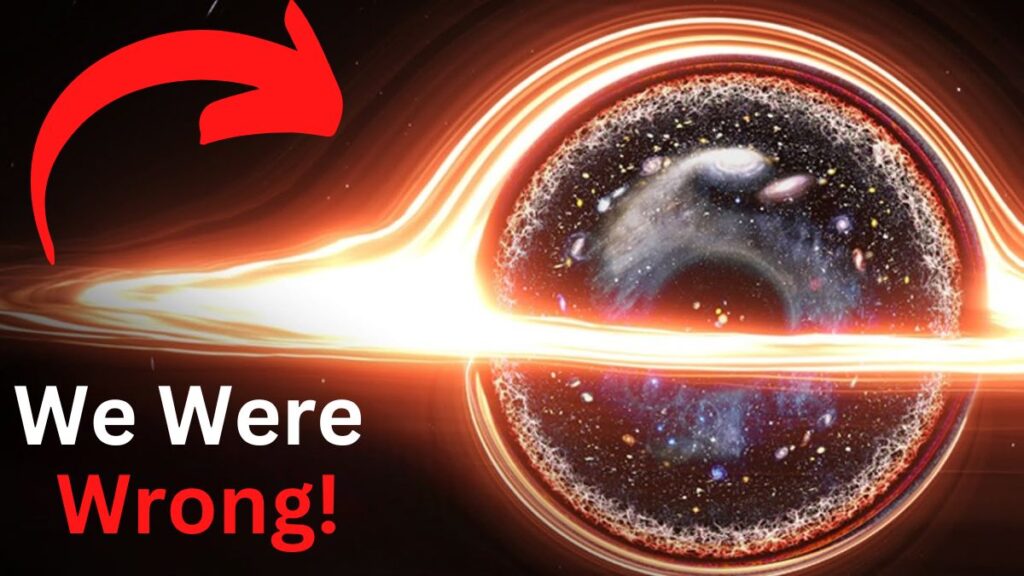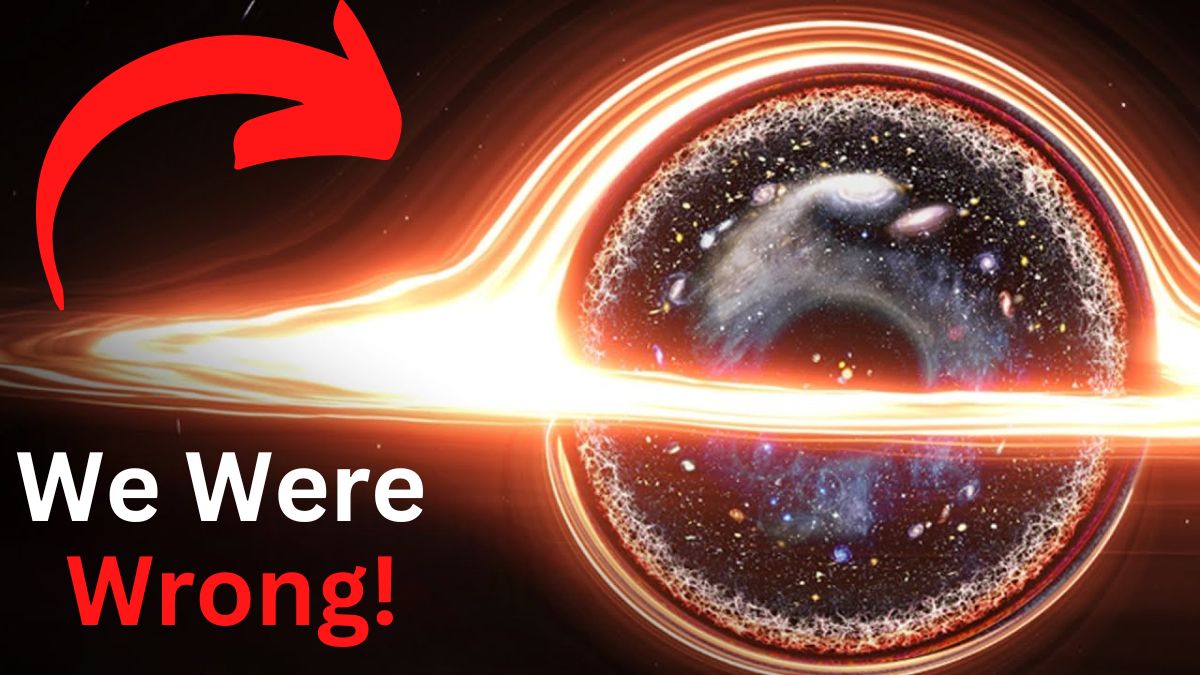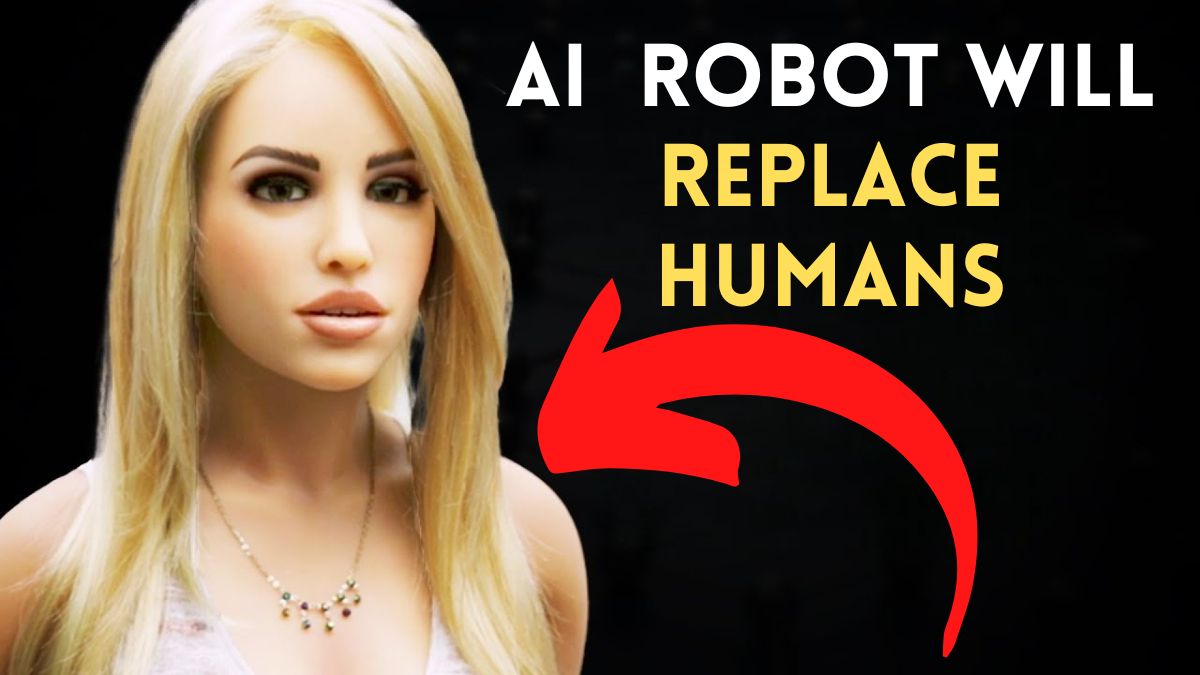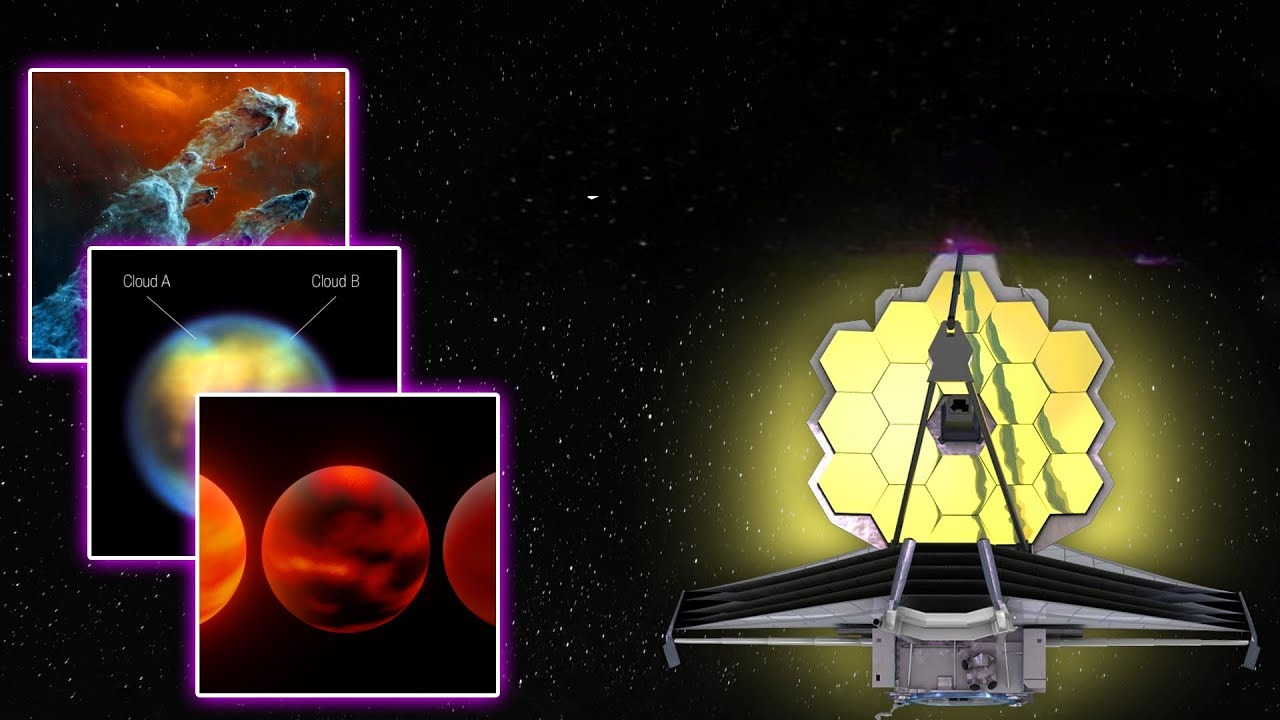
One of the biggest questions humans have grappled with is where did all of this come from.
However, we might be close to getting the answer thanks to a new theory that some people might find scary.
The Big Bang might be wrong, and we live inside a black hole.
What is the reasoning behind this claim?
What does it mean if we live inside a black hole?
In this article, we go into details of the latest theory that the Big Bang could be wrong and we might have been living inside a black hole all this time.
What is your postal code?
Chances are that you can recite it without checking.
However, we might have gotten our postal code in the universe mixed up all this time.
Scientists have come up with a radical idea that we might all be neighbors in a black hole.
When you think of black holes, you might think that they’re in places so far away that we remain safe from their notoriety of swallowing everything up.
But this theory is placing us right inside a black hole.
So, which black hole are we inside right now?
The 20th century brought us to a high level of scientific consciousness that our ancestors could never have dreamed about.
Amongst other wonderful stuff, we discovered that distant objects in the universe are moving faster and faster away from one another, indicating that our universe is expanding.
We discovered that galaxies further away appear younger, less massive, and have higher rates of star formation, evidence that our universe evolves over time.
We also discovered a nearly uniform background of black body radiation, indicating an early hot dense radiation-dominated state.
When all of these puzzle pieces are put together, they indicate that our universe arose from a hot big bang 13.8 billion years ago.
However, our universe has this peculiar property if you add up the mass and energy of all the particles in the visible universe.
You can calculate how large The Event Horizon of a black hole with this mess would be, and amazingly the result is very close to the actual Horizon size of the observable universe.
Another related idea popularized by Stephen Hawking is that every time we create a black hole in our universe we may make a baby universe that is only accessible to an observer who crosses inside the Event Horizon of their black hole.
But what is the reasoning Behind These theories?
Well, it’s actually fascinating.
Without an event horizon, there is no black hole.
It is the boundary that tells a very different story from an object outside of it versus one inside it.
Any object outside a black hole’s Event Horizon will feel its gravitational effect because space is curved by the black hole’s presence but it can still Escape If It Moves or accelerates quickly enough in the right direction, it will not necessarily fall into the black hole.
It may be able to escape its gravitational pull.
However, as numerous sci-fi flicks have shown, once you or an object crosses over to the other side of the Event Horizon, it is doomed to be absorbed by the black hole Central Singularity.
And because the fabric of space-time inside a black hole is severely curved.
An in-falling object will reach the singularity within seconds of crossing the Event Horizon, increasing the black hole’s mass.
The black hole appears to form, gain mass, and grow over time to someone outside at the Event Horizon.
Now, if you add up all of the known measurable forms of mass and radiation in the observable universe, you would have to sum up the following: normal matter composed of protons, neutrons, and electrons, neutrinos, ghostly fundamental particles that rarely interact with the normal matter, dark matter which dominates the universe’s mass but has so far eluded direct detection efforts, photons or light particles which carry energy from every electromagnetic event throughout Cosmic history, and gravitational waves which are produced whenever a mass moves and accelerates through the curved fabric of space-time.
Now, doing the summation in all 46 billion light years in all directions, you will arrive at the equivalent mass of the universe using Einstein’s famous equation energy equals mass multiplied by the speed of light squared.
But let’s take this further by asking this question: What would happen if the entire universe was compressed into a single point?
Well, the answer is the same as if you compressed any large enough collection of mass or energy into a single point: A black hole would form.
This is one of the remarkable things about Einstein’s theory of gravity.
If this collection of mass and or energy isn’t charged electrically and isn’t rotating or spinning (that is, without angular momentum), the total amount of mass is the only factor that determines how big the black hole is, which scientists call the Schwarzschild radius.
Now, wait for it, the Schwarzschild radius of a black hole containing the mass of all matter in the observable universe is nearly identical to the observed size of the visible universe.
And that realization on its own appears to be a remarkable coincidence, raising the possibility that our universe is in fact the interior of a black hole.
But that’s only the beginning of the story.
Things get even more interesting as we go deeper.
A discovery in the mid-1960s transformed our understanding of the universe: A uniform, omnidirectional bath of low-energy radiation appeared from all points in the sky.
This radiation had the same temperature in all directions, which has now been determined to be 2.725 Kelvin, which is just a few degrees above absolute zero.
The radiation had a nearly perfect black body Spectrum as if it came from a hot thermal source and appeared to be identical to within one part in 30,000 no matter where you looked in the sky.
This radiation, dubbed the Primeval Fireball before being renamed the cosmic microwave background, provided crucial evidence that our universe is expanding and cooling because it was hotter and denser in the past.
Things were smaller, more uniform, and more compact as we extrapolated further back.
This image of the hot big bang appears to be approaching its singularity, the same condition found in the central interiors of black holes, a location where density, temperature, and energies are so extreme that the laws of physics themselves break down.
But when you look at the equations that govern a black hole, something remarkable happens.
If you start just outside the Event Horizon and travel indefinitely away from the black hole, you’ll find that your distance goes from the Schwarzschild radius to Infinity.
If you start just inside the Event Horizon and measure your distance from the black hole to the central singularity, you’ll discover that the same distance instead goes from the Schwarzschild radius to zero.
Now, is this anything to get excited about?
Well, yes it is a big deal for a reason: if you compare all of the properties of space outside of a black hole’s Event Horizon from the Schwarzschild radius to all of the properties of space inside the black hole’s Event Horizon from R to zero, they’re identical at every single point.
Simply replace the distance with its reciprocal, that is one over the distance and you will find that the black hole’s interior and exterior are mathematically identical.
It’s almost as if you take a spherical orb that is 100% reflective, and notice that the entirety of the universe that is outside of that sphere is now contained to, albeit distorted in the mirror image that is reflected on the sphere’s surface.
Two new discoveries have shaken the foundations of cosmology as our understanding of the universe has improved and been refined over the last few decades.
The first was Cosmic inflation, which suggests that instead of arising from a singularity, the universe was created by a rapid, relentless state of constant exponential expansion that preceded the hot big bang.
It’s as if there was some kind of field that provided energy inherent in space itself, causing the universe to inflate and the hot big bang to begin only when inflation ended.
Now, what about the second?
That is dark energy.
As the universe expands and becomes less dense, distant galaxies begin to recede from us at an increasing rate.
Once again, albeit on a much smaller scale, the universe behaves as if there is some sort of energy inherent in space itself, refusing to dilute even as space expands.
People have speculated about a connection for as long as inflation and dark energy have been known to exist, and the fact that there is a fundamental difference in the expansion rate of the universe that you infer depending on which of the two classes of methods you use to measure it only adds weight to that theory.
One persistent possibility for explaining this discrepancy is that there was a stronger form of dark energy early on, one that existed after the end of inflation but decayed before the cosmic microwave background scattered off the Primeval plasma for the final time.
Perhaps inflation and dark energy have more in common than we realize, and black holes can shed light on the nature of their connection.
So, what could be the connection between inflation and dark energy?
Once again, black holes may hold the key.
As matter falls into them, black holes gain mass and decay, losing mass through Hawking radiation.
So, is it possible that changing the size of the Event Horizon changes the energy inherent in the fabric of space to an observer located inside the Event Horizon?
Is it possible that Cosmic inflation marks the birth of our universe from an ultra-massive black hole?
Is it possible that dark energy is also linked to black holes, and does this imply that as astrophysical black holes form within our universe, each one creates its own baby universe somewhere within.
These theories have circulated for decades and while there is no definitive or provable conclusion, there are some mathematically compelling pieces of evidence that suggest a link.
Nonetheless, many models and ideas exist in this line of thought and remains compelling to many who study black holes, thermodynamics, entropy, general relativity, and the beginning and end of the universe.
The most famous attempt at this is Roger Penrose’s conformal cyclic cosmology (CCC), which makes a unique prediction that differs from standard cosmological models: the existence of Hawking points or circles of unusually low temperature variants of the cosmic microwave background.
Unfortunately, these features do not appear robustly in the data, relegating the idea that our universe was born from a black hole and the black holes give birth to baby universes to the realm of pure speculation.
However, the theory that we exist in a black hole is surprisingly gaining more support among scientists.
A group of radical astrophysicists from the University of Waterloo has proposed that the Big Bang be replaced by a black hole.
Robert Mann, a physics and applied mathematics professor, and his colleagues have proposed that we live in a four-dimensional black hole formed by the collapse of a five-dimensional star.
Mann claims that the idea originated four years ago with Nayesh 40, another Waterloo Professor.
The basic idea was that the singularity of the universe could be analogous to the singularity at the center of a black hole.
In some ways, the idea was motivated by the desire to unify the concept of singularity or what is incompleteness in general relativity between black holes and cosmology.
As a result, the idea that the Big Bang was analogous to the formation of the black hole, or rose, albeit in reverse.
Part of the motivation for developing the theory was to come up with alternative ideas to standard cosmological pictures concerning inflation.
Professor Mann went on to say that they wanted to connect the holographic ideas, which hold that the gravitational physics in one dimension of space-time is equivalent to non-gravitational physics in a smaller dimension.
As this was being discussed, the idea was that we would be in the smaller dimension and that one dimension larger than us in a five-dimensional universe, there might be some kind of five-dimensional star that could collapse into a black hole.
There is an explosion of a matter membrane in the process, and how a universe was this membrane, so to speak.
This idea was an alternative to the most common inflationary universe scenario.
Using string theory terminology, they argue that our three-dimensional world is just a membrane in a much larger four-dimensional universe.
Instead of our universe experiencing a period of rapid expansion and cosmic inflation, the structure of the universe was dictated by gravitational collapse properties in higher dimensions.
Because this idea was unusual, the team decided to investigate it.
Another scientist working on the theory that we might exist inside a black hole is theoretical physicist Nicodem Poplowski.
In fact, Nicodem theorizes that every black hole contains a brand new universe.
According to this scientist, our entire universe could be inside a black hole, which is in turn inside another black hole.
A baby universe, according to him, is a separate closed space-time branch with its own timeline, and because it is on the other side of the event horizon, it’s larger than the parent black hole.
It is similar to the TARDIS from Doctor Who, you walk into the police box and realize you’re in something bigger than the box.
According to Nicodem, if we follow the Einstein-Cartan theory of gravity, every black hole creates a new baby universe inside and becomes an Einstein-Rosen bridge or wormhole that connects this universe to the parent universe in which the black hole exists.
The parent universe appears as the other side of the only white hole in the new universe region of space that cannot be entered from the outside and can be thought of as the time reverse of a black hole.
As a result, our universe could be the interior of a black hole in another universe.
Nicodem believes that a physical force known as torsion would tend to carry physics laws from the parent universe into the new baby’s reality.
However, Nicodin believes that not much else will mean there is a slim chance that anyone will ever visit all alternate universes.
An Einstein-Rosen bridge to a new universe would not be traversable because a traversable wormhole is defined as one that connects two.
Yes, planet Earth can turn into a black hole if the conditions are right.
If the electromagnetic and Quantum forces that keep the Earth from collapsing were to be turned off, the Earth would quickly become a black hole.
The Earth is currently stable against gravitational collapse because the forces between its atoms, or more specifically between electrons in neighboring atoms, are large enough to resist the cumulative force of gravity provided by the Earth’s entire mass.
And this isn’t entirely surprising given that the gravitational force versus the electromagnetic force between two electrons was found to be stronger by a factor of a whopping 10 raised to the power of 42.
However, in the case of massive stars, neither the electromagnetic force nor the power exclusion principle can withstand the force in sight and gravitational collapse.
If the cause of radiation pressure from nuclear fusion falls below a critical threshold, collapse to a black hole is unavoidable.
So, here is how fantastic chaos will follow after the Earth becomes a black hole.
First, the material that makes up the solid earth would begin accelerating as if in perfect free fall towards the center of the earth.
You can calculate how large the event horizon of a black hole with this mess would be, and amazingly the result is very close to the actual horizon size of the observable universe.
Another related idea, popularized by Stephen Hawking, is that every time we create a black hole in our universe, we may make a baby universe that is only accessible to an observer who crosses inside the event horizon of their black hole.
But what is the reasoning behind these theories?
Well, it’s actually fascinating.
Without an event horizon, there is no black hole.
It is the boundary that tells a very different story from an object outside of it versus one inside it.
Any object outside a black hole’s event horizon will feel its gravitational effect because space is curved by the black hole’s presence, but it can still escape if it moves or accelerates quickly enough in the right direction.
It will not necessarily fall into the black hole.
It may be able to escape its gravitational pull.
However, as numerous sci-fi flicks have shown, once you, or an object, crosses over to the other side of the event horizon, it is doomed to be absorbed by the black hole’s central singularity, and because the fabric of space-time inside a black hole is severely curved, an in-falling object will reach the singularity within seconds of crossing the event horizon, increasing the black hole’s mass.
The black hole appears to form, gain mass and grow over time to someone outside at the event horizon.
Now, if you add up all of the known measurable forms of mass and radiation in the observable universe, you would have to sum up the following: normal matter composed of protons, neutrons, and electrons, neutrinos, ghostly fundamental particles that rarely interact with normal matter, dark matter, which dominates the universe’s mass but has so far eluded direct detection efforts, photons or light particles which carry energy from every electromagnetic event throughout cosmic history and gravitational waves which are produced whenever a mass moves and accelerates through the curved fabric of space-time.
Now, doing the summation in all 46 billion light years in all directions, you will arrive at the equivalent mass of the universe using Einstein’s famous equation, energy equals.
Yes, planet Earth can turn into a black hole if the conditions are right.
If the electromagnetic and quantum forces that keep the Earth from collapsing were to be turned off, the Earth would quickly become a black hole.
The Earth is currently stable against gravitational collapse because the forces between its atoms, or more specifically between electrons in neighboring atoms, are large enough to resist the cumulative force of gravity provided by the Earth’s entire mass.
And this isn’t entirely surprising given that the gravitational force versus the electromagnetic force between two electrons was found to be stronger by a factor of a whopping 10 raised to the power of 42.
However, in the case of massive stars, neither the electromagnetic force nor the Pauli Exclusion Principle can withstand the force of gravity and gravitational collapse if radiation pressure from nuclear fusion falls below a critical threshold.
Collapse to a black hole is unavoidable.
So here is how fantastic chaos will follow after the Earth becomes a black hole: first, the material that makes up the solid Earth would begin accelerating as if in perfect free fall towards the center of the Earth.
Mass would accumulate in the central region with a density steadily increasing over time.
And as it accelerates towards the center, the volume of this material would shrink while the mass remained constant.
And over the course of a few minutes, the density in the center would begin to rise dramatically as material from all different radii passed through the Earth’s exact center of mass repeatedly.
And after 10 to 20 minutes, enough matter would have gathered in the central few millimeters to form an event horizon for the first time.
But we’re not done yet.
In just a few minutes more, 21 to 22 minutes total, the entire mass of the Earth would have collapsed into a black hole only 1.75 centimeters in diameter.
And all that is unavoidable if the Earth must turn into a black hole.
But what would you feel as the planet collapsed into a black hole beneath our feet?
The physical effect won’t be different if we instantly replaced the Earth with an Earth-mass black hole.
The only exception is what you would see.
A black hole would simply distort the space beneath our feet as we fell towards it, resulting in bent light due to gravitational lensing.
However, if the material that makes up the Earth continues to emit or reflect light, it will remain opaque.
We will be able to see what happens to the surface beneath our feet as we fall.
In either case, the first thing that would happen to you is a transition from being at rest, where the force from the atoms on Earth’s surface pushed back on you with an equal and opposite force, to gravitational acceleration to being in free fall and 9.8 meters per second squared towards the Earth’s center.
And when you arrive 99 percent of the way to the center of the Earth, the force pulling your feet away from your torso and your head away from your feet equals about 110 pounds, as if the equivalent of nearly your own.
Explore:





![Moon Jellyfish has [ Hidden Secrets ] You don't know moon jellyfish](https://spaceupper.com/wp-content/uploads/2022/11/1-1.jpg)

